If you’re experiencing high CPU usage caused by Windows Driver Foundation on your Windows 10 system, you’re not alone. Windows Driver Foundation is a core component that manages driver services, but sometimes, errors can cause it to use excessive CPU resources.
While Windows Driver Foundation typically doesn’t restrict the CPU’s functions, issues can lead to high CPU usage, draining battery power and even causing your system to freeze when it hits 100% CPU usage.
In this article, we’ll explore how to fix the “Windows Driver Foundation high CPU” issue and get your system back to normal.
What is the Windows Driver Foundation High CPU Usage?
The Windows Driver Frameworks (WDF), also known as the Windows Driver Foundation, is a set of libraries that help manage device drivers in Windows. Don’t worry—it’s not malware or anything harmful; it’s an essential part of your operating system. Without the driver foundation, many hardware components, like your mouse or GPU, wouldn’t function.
However, some users experience high CPU usage caused by the Windows Driver Foundation. This can lead to performance issues, including a lagging system or even an unresponsive computer when the CPU hits 100% usage.
To fix this issue, you can troubleshoot with the following methods:
- Run Windows Update to install the latest optimization features.
- Use Windows’ built-in troubleshooters to detect and resolve issues.
- Try a Clean Boot to isolate the cause of the problem.
- Disconnect peripherals from your computer to identify the culprit.
- Update or reinstall your Wi-Fi driver to rule out driver conflicts.
- Terminate the Windows Driver Foundation service task in Task Manager.
- Disable HID Sensor Collection V2 on Surface Pro devices.
- Use a recovery point to restore your system to a stable state.
- Reset or reinstall Windows as a last resort.
Now, let’s go through each of these troubleshooting steps in detail to help you resolve the high CPU usage problem.
Solved: Windows Driver Foundation High CPU Usage
If you’re struggling with high CPU usage caused by the Windows Driver Foundation process, don’t worry—there are several solutions to resolve the issue. Follow the steps carefully to avoid causing any further damage to your system.
Method 1: Disconnect Peripherals from Your Computer
If Windows Driver Foundation is consuming a lot of CPU resources, it might be due to a faulty or corrupt driver associated with one of your peripherals (e.g., mouse, keyboard, printer). Disconnecting your peripherals one by one can help identify the device causing the problem.
🔌 Steps to Disconnect Peripherals:
- Disconnect your peripherals one at a time.
- Monitor the CPU usage of the Windows Driver Foundation process after each disconnection.
- If the CPU usage drops after disconnecting a specific device, it’s likely that device drivers are the cause of the issue.
If you identify a device causing the high CPU usage, you can proceed to update or reinstall the driver for that device to resolve the issue.
Method 2: Boot Your System in Clean Boot Mode to Fix High CPU Usage
To isolate potential conflicts causing Windows Driver Foundation to use excessive CPU resources, you can perform a clean boot. This process disables third-party services and applications that may be causing issues, allowing you to check if the Windows Driver Foundation continues to consume CPU power without interference from other software.
🔧 How to Perform a Clean Boot on Windows 10:
- Press
Windows + Rto open the Run utility. - Type “msconfig” (without quotes) and hit Enter to open the System Configuration window.

- Switch to the Services tab.
- Check the box labeled Hide all Microsoft services. This will ensure only third-party services are displayed.
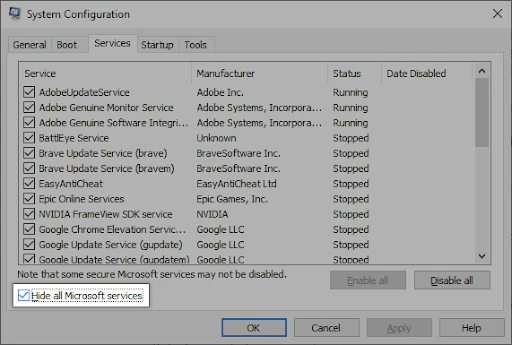
- Click Disable all to disable all third-party services on your device.
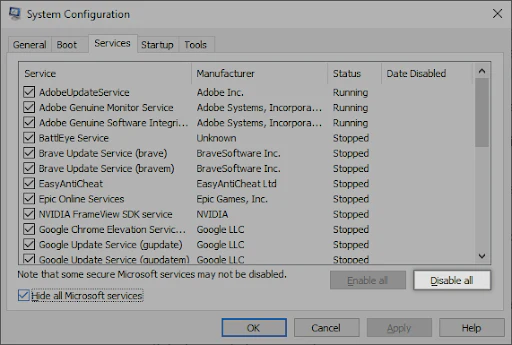
- Click Apply, then restart your computer.
After restarting, your computer will boot into Clean Boot mode, running only essential Microsoft services.
- Check if the Windows Driver Foundation is still using high CPU resources in this state.
If you notice a drop in CPU usage after entering Clean Boot mode, it means a third-party service is causing the issue. You’ll need to identify and either replace the associated driver, update the conflicting application, or disable the problematic service.
Method 3: Use the System Maintenance Troubleshooter to Resolve High CPU Usage
Microsoft offers a variety of built-in troubleshooters to help resolve system issues, including high CPU usage caused by Windows Driver Foundation. The System Maintenance Troubleshooter is designed to automatically detect and fix problems related to your system’s performance, whether they’re directly related to the CPU issue or not.
🛠️ How to Use the System Maintenance Troubleshooter:
- Click on the Windows icon in the bottom-left corner of your screen to open the Start menu. Alternatively, press
Windows + Ito open Settings.
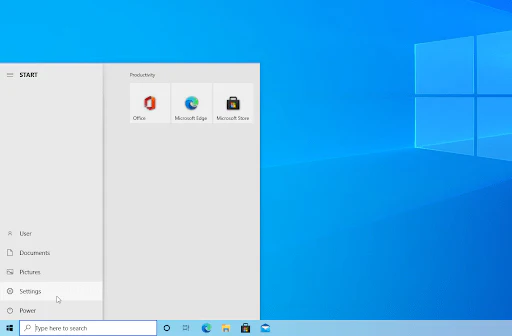
- In Settings, select Update & Security.
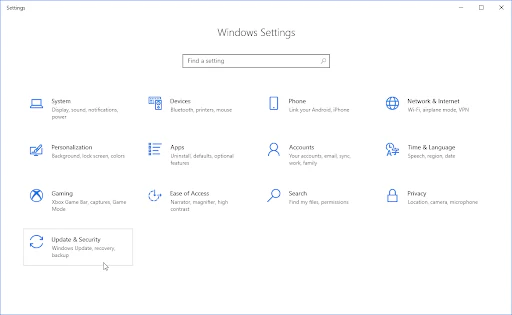
- Switch to the Troubleshoot tab in the left-side pane.

- Scroll down and find the System Maintenance Troubleshooter.
- Click Run the troubleshooter and wait for it to scan your system for issues.
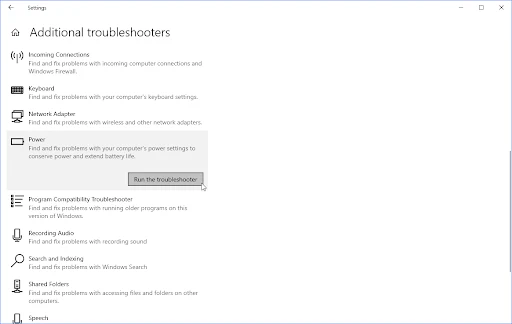
If you prefer not to share diagnostic data with Microsoft, click on Additional troubleshooters and locate the System Maintenance Troubleshooter there.

🔍 Keep in mind that this troubleshooter might not always detect the issue. If it doesn’t resolve the problem, don’t worry! Our other methods can still help you fix the high CPU usage.
Method 4: Update Windows to the Latest Version to Fix High CPU Usage
Updating your Windows operating system can resolve many underlying issues, including the Windows Driver Foundation using excessive CPU resources. Installing the latest Windows updates may fix the problem and improve your system’s overall performance.
🔄 How to Update Windows 10:
- Click on the Windows icon in the bottom-left corner to open the Start menu. Alternatively, press
Windows + Ito open Settings.
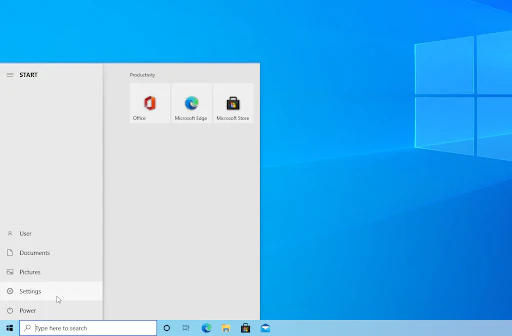
- In Settings, click on Update & Security to access the Windows Update settings.

- Ensure you’re on the Windows Update tab. Then, click Check for updates and wait for Windows to find available updates.
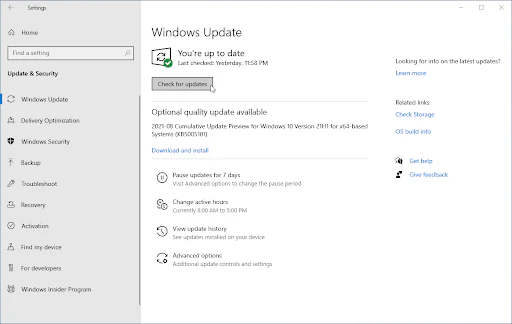
- If any updates are found, click on View all optional updates to review and install them.
- Once an update is found, click Install to begin downloading and applying the update.
After updating, restart your computer and check if the high CPU usage from Windows Driver Foundation persists.
Method 5: Update or Reinstall Your Drivers to Fix High CPU Usage
Like your Windows operating system, your drivers can become outdated over time. Whether you installed the correct drivers in the past or your system came with built-in ones, keeping them up to date is essential for maintaining system performance and resolving issues like high CPU usage caused by Windows Driver Foundation.
🔧 How to Update or Reinstall Your Drivers:
- Press
Windows + Xto open the WinX menu and click on Device Manager.

- In Device Manager, expand the relevant driver category by clicking the arrow next to it.
- Right-click on the device driver you want to update (for example, a Bluetooth device driver) and select Update Driver.
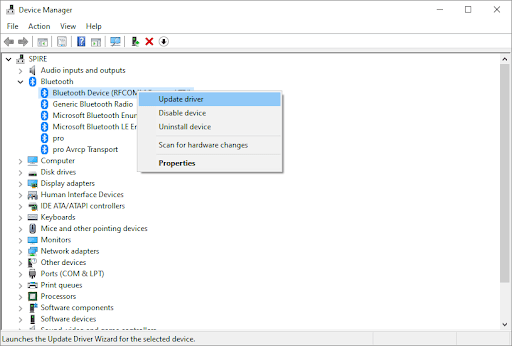
- Choose how you want to update the driver:
- Search automatically for updated driver software: This will let Windows 10 search for and install the latest driver.
- Browse my computer for driver software: If you already have the driver file on your computer, manually locate it.
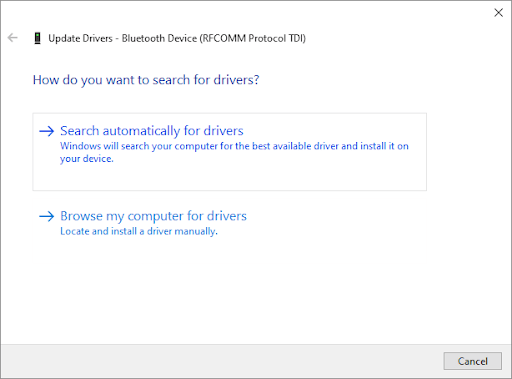
- Wait for the driver installation to complete. Repeat this process for any other drivers that may be outdated.
- Once finished, restart your computer to apply the changes and check if the high CPU usage has been resolved.
Method 6: Disable HID Sensor Collection V2 on Surface Pro to Fix High CPU Usage
If you’re using a Surface Pro device, disabling the HID Sensor Collection V2 device may help resolve high CPU usage caused by Windows Driver Foundation. This method targets a specific sensor driver that might be contributing to the problem.
🖱️ How to Disable HID Sensor Collection V2:
- Attach the type cover to your Surface Pro device if it’s not already attached.
- Press
Windows + Xto open the WinX menu, then select Device Manager. - Locate and expand the Sensors section.
- Right-click on the HID Sensor Collection V2 entry in the list and choose Disable from the context menu.
- Restart your Surface Pro and check if the CPU usage issue is resolved.
Method 7: Repair Your System Files to Fix High CPU Usage
Corrupted system files can cause significant issues with your Windows operating system, including high CPU usage. Fortunately, the System File Checker (SFC) is a built-in tool that can detect and repair corrupted files, which may resolve the problem.
🔧 How to Repair Your System Files:
- Open the search bar by clicking the magnifying glass icon in your taskbar or press
Windows + Son your keyboard. - Type Command Prompt into the search box. When it appears in the results, right-click on it and select Run as Administrator.
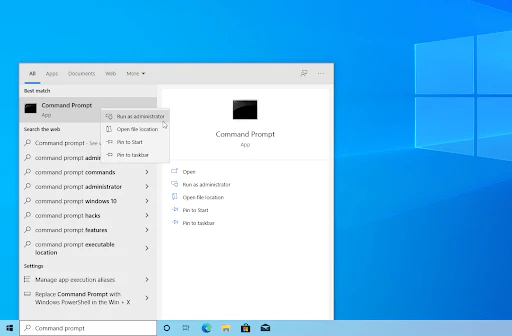
- When prompted by the User Account Control (UAC), click Yes to allow the app to launch with administrative privileges.
- In the Command Prompt window, type the following command and press Enter:
sfc /scannow
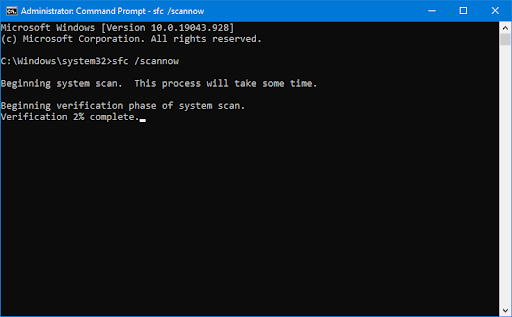
- Wait for the System File Checker to finish scanning and repairing any corrupted system files. If discrepancies are found, it will automatically restore and fix them.
Method 8: Repair Your System with System Restore to Fix High CPU Usage
If your Windows 10 system has a stored restore point from before the issue occurred, you can use System Restore to roll back to that time and fix problems like high CPU usage caused by the Windows Driver Foundation process. It’s essentially like traveling back in time to a point where the system was functioning correctly.
🔄 How to Use System Restore:
- Open the search bar in your taskbar by clicking the magnifying glass icon or press
Windows + Son your keyboard. - Type in System Restore and click on Recovery from the search results (this should appear at the top in the Best match category).
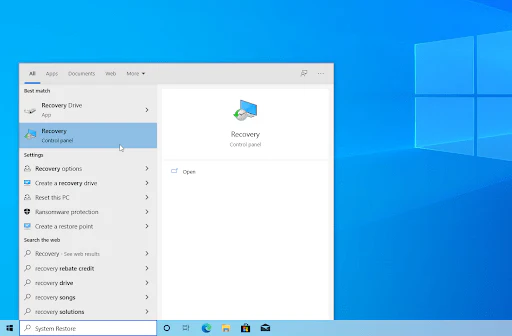
- This will take you to the Control Panel. Click on the Open System Restore link in the Advanced recovery tools section.

- Follow the on-screen instructions to restore your system to a previous point. You can choose a specific restore point or use the recommended one provided by Windows 10. Be sure to review what files and applications will be affected by this restoration!
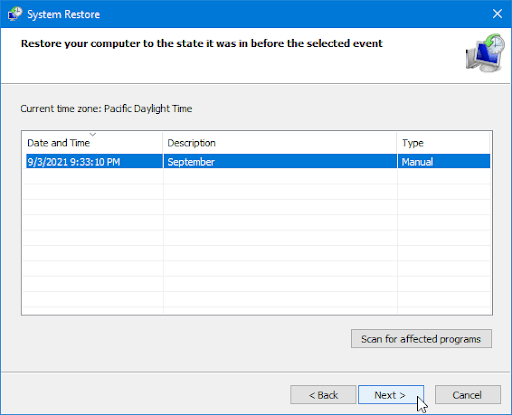
- After selecting your options, click Finish and wait for Windows 10 to complete the restoration process.
- Once the restoration is complete, check if the Windows Driver Foundation process is still using excessive CPU resources.
Method 9. Reset or reinstall Windows
If nothing above worked, you may only fix your issue if you reset or reinstall Windows. You may reinstall the system without losing any personal files depending on your preferences. Unfortunately, this will delete most of your applications and system configuration to give your device a fresh start.
One more thing
If you’re in search of a software company that embodies integrity and upholds honest business practices, your quest ends here at Ecomkeys.com. As a Microsoft Certified Partner, we prioritize the trust and satisfaction of our customers. Our commitment to delivering reliable software products is unwavering, and our dedication to your experience extends far beyond the point of sale. At Ecomkeys.com, we provide a comprehensive 360-degree support system that accompanies you throughout your software journey. Your trust is our foundation, and we’re here to ensure that every interaction with us is a positive and trustworthy one.

